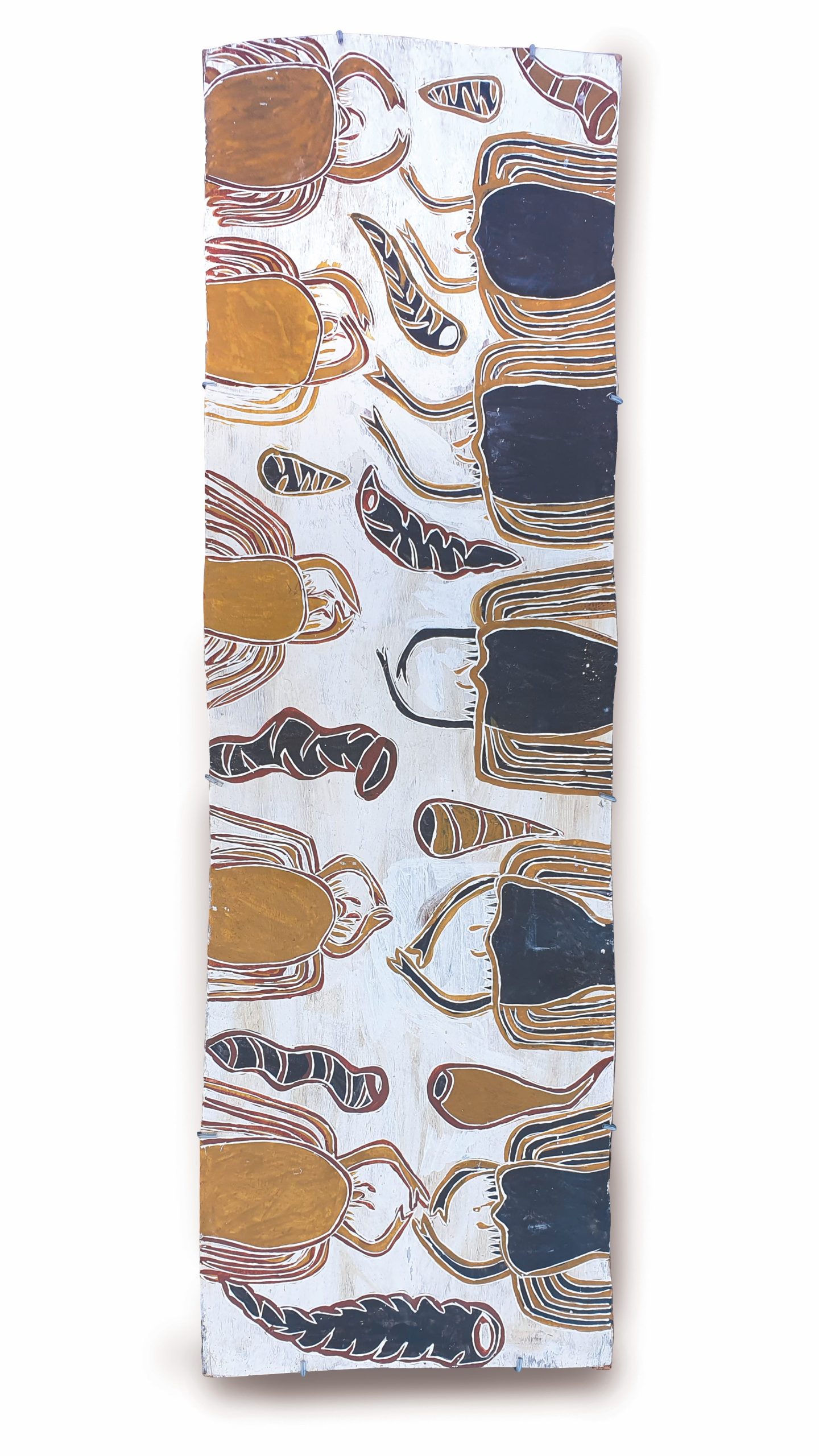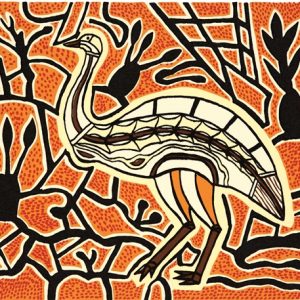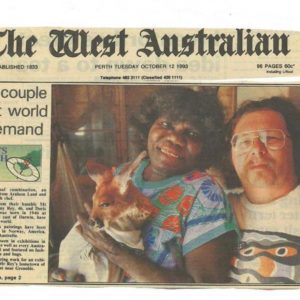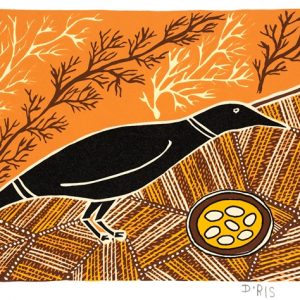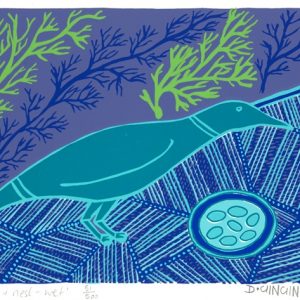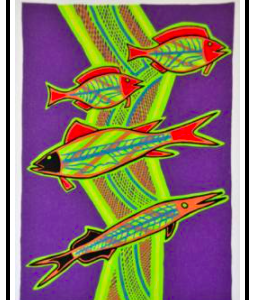Description
- Medium: earth pigments on Stringybark
- Size: 45 x 150 cm
- Catalogue #1483-19
- Created: 2019
Gan’kurr, nonda, ŋukaliya
Ŋukaliya, hermit crab, Clibanarius taeniatus which descend from the arched roots to the seabed as the tide encroaches. These are a delicious standby staple for any estuarine hunting trip. Generally housed in the discarded shell of Bunybu the Lesser Longbum, Terebralia palustris who are eaten and seen as medicinal and whose empty shells often provide the home of the more mobile Ŋukaliya. Ŋukaliya are delicious when cooked and they turn a bright orange colour. It is not uncommon to see large congregations of them as they gather for a conga line of shell swapping next to a large washed up shell which could see them all upgrade once the larger crab abandons its shell for the new one. Yolŋu know how to tempt hermit crabs to leave their shell entirely by making an ululating sound which triggers this behaviour.
Gan’kurr is the Tectus pyramis or Pyramid Top Snail. A conal pyramidic cylinder with a spiral gently frilled surface fitting on a twenty cent to fifty cent piece sized base. The Yolŋu distinguish between this and latha which is the rougher variety currently regarded by science as the same species.
It is attached to rocks and moves amongst reefy areas. It is Dhuwa. The Yolŋu dictionary calls this a trochus shell. They are edible.
Dhuwarrwarr Marika
- Born: c.1945
- Language group: Yolŋu
- Moiety: Dhuwa
- Clan: Rirratjiŋu, Miliwurrwurr group
- Homelands: Yirrkala, Yalaŋbara, Gulurunga, Bremer Island
Dhuwarrwarr’s father, Mawalan, was the ceremonial leader of the Rirratjiŋu tribe and was steeped
in the mythology of his people. He painted up to the time of his death, and with failing eyesight and poor health, allowed Dhuwarrwarr to help him, after consultation with his sons and brothers and elders of the group. She has not painted since his death until recently, when she again requested permission from her brothers to do so.
Born in 1945 Dhuwarrwarr is sister of Wandjuk, Bayŋgul and Banduk Marika, and daughter of Mawalan, the Rirratjiŋu clan leader who originally welcomed the missionaries to set up on his land, creating the beginnings of modern day Yirrkala.
Dhuwarrwarr is a statesperson for her people, representing them on various committees and institutions such as Land Councils and Women’s groups. In 1993 she travelled to Europe as an invited speaking guest for the opening of the international traveling exhibition of ‘Aratjara – Art of the First Australians’.
She also attends to the day-to-day needs of a wide group of young and old clans-people with a particular emphasis on guiding and guarding the young minds of her family. She lives on Rirratjiŋu land either at her house overlooking the beach and creek at Yirrkala or at Gutjangan on Bremer Island.
Her first genuine solo exhibition held relatively late in her career, ‘Milngurr’ at Vivien Anderson Gallery in Melbourne in 2008 was a literal sell out within 5 minutes of opening. Institutional Collections purchased the bulk of the works. She has continued to exhibit commercially and to be shown in institutional shows to this day. Her second solo exhibition was at Songlines in Darwin in 2021.
Provenance: this artwork was sourced from Buku Larrnggay Mulka, Yirrkala in NE Arnhem Land

